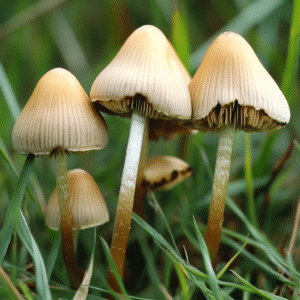In today’s fast-paced world, finding a moment to breathe and simply be present can feel like hunting for a unicorn. This is where mindful meditation, an age-old practice from Buddhist traditions, steps in, offering solace and hope. Especially in the year 2024, with its unrelenting pace and inherent challenges, mindful meditation holds the promise of tranquility and clarity. This practice is about living in the moment, being non-judgmentally aware of every fleeting second, and gracefully navigating the hurdles life throws our way.
The Essence of Mindful Meditation: A Deep Dive
Mindful meditation, at its core, means being fully present in the moment, aware of where we are and what we’re doing, without being overly reactive or overwhelmed by what’s going on around us. This seemingly simple practice has found newfound relevance as people grapple with connected yet fragmented lives driven by technology and stress. As we step into 2024, mindful meditation stands out as a remarkably potent strategy to reclaim our peace of mind and balance.
Top 7 Transformative Benefits of Mindful Meditation
| Aspect | Details |
| Definition | Mindfulness meditation focuses on being intensely aware of what you’re sensing and feeling in the moment, without interpretation or judgment. |
| Core Components | – Breathing methods – Guided imagery – Relaxation practices |
| Step-by-Step Guide | 1. Settle in: Find a quiet space. Use a cushion or chair to sit up straight but not stiff. Allow head and shoulders to rest comfortably. |
| 2. Hands and Arms: Place your hands on the tops of your legs with upper arms at your side. | |
| 3. Breathe: Close your eyes. Take a deep breath and relax. | |
| 4. Mental Focus: Breathe in while mentally saying “breathe in.” Breathe out while saying “breathe out.” | |
| 5. Continue: Maintain focus on this circular breath and the associated words for about 20 minutes. | |
| Physical Posture | – Sit comfortably with a straight back, feet flat on the floor. – Hands resting in lap. |
| Focus Technique | – Breathe through the nose. – Focus on breath movement in and out of the body. |
| Interruptions Handling | – If interrupted by thoughts or physical sensations, note the experience. – Gently return focus to breath. |
| Alternate Practice | Walking Meditation: Focus on each step and breath. |
| Benefits | – Reduces stress – Enhances emotional health – Improves concentration – Increases self-awareness – Promotes relaxation |
| Common Use Cases | – Everyday stress relief – Depression and anxiety management – Pain management – Sleep improvement |
| Accessibility | – Can be practiced anywhere – Requires no special equipment |
| Recommendations | – Practice daily for best results – Start with short sessions and gradually increase duration |
Techniques and Practices: Cultivating Mindfulness in Daily Life
Plain Meditation:
– Sit comfortably and focus on your breath. When distractions arise, guide your focus back to your breath. This foundational technique nurtures deeper mindfulness.
Body Scan Meditation:
– Mentally scan your body from head to toe, observing any areas of tension and consciously releasing them. Apps like Calm and Headspace offer guided sessions for beginners.
Loving-Kindness Meditation:
– Develop compassion by silently repeating phrases of goodwill towards yourself and others. Practitioners often experience profound emotional healing and a heightened sense of connection.
Mindfulness in Everyday Activities:
– Integrate mindfulness into daily tasks such as eating, walking, or washing dishes. This practice converts routine activities into moments of mindfulness, reducing stress and enhancing satisfaction.
How Mindful Meditation Supports Parents of Children Struggling with Addiction
For parents grappling with a child’s addiction, mindful meditation can offer much-needed emotional support.
Emotional Resilience:
– Mindfulness helps parents build resilience, allowing them to manage their emotions more effectively through the ups and downs of their child’s recovery. This resilience is a crucial asset in maintaining stability and hope.
Improved Communication:
– Practicing mindfulness enhances parents’ ability to listen without judgment and communicate compassionately. This establishes a positive environment that can profoundly affect the child’s recovery journey.
Community and Support:
– Engaging in mindfulness groups or workshops provides a sense of community and shared experiences, which is deeply healing. Non-profit organizations, such as those supported by Mindful Schools, offer programs for families dealing with addiction.
Harnessing the Power of Technology: Achieving Mindfulness in a Digital World
Technology has made achieving mindfulness more reachable than ever. Here’s how you can leverage it:
Meditation Apps:
– Apps like Insight Timer and Buddhify bring an array of guided meditations right to your fingertips, accommodating all levels and schedules.
Virtual Reality (VR) Meditation:
– VR platforms like Tripp and Oculus immerse users in tranquil environments that foster deeper meditation.
Wearable Technology:
– Devices like the Muse headband provide real-time feedback on brain activity, helping refine meditation techniques for better outcomes.
Online Mindfulness Courses:
– Platforms like Coursera and Udemy offer structured courses led by experts such as Jon Kabat-Zinn, making it easier for individuals to incorporate mindful meditation into their daily routines.
Embracing Mindfulness: A Continuous Journey Towards Inner Peace
Incorporating mindful meditation into daily life is a journey toward understanding oneself more profoundly and achieving lasting peace and fulfillment. Amid life’s inevitable challenges, mindful meditation serves as a powerful ally in managing stress with poise and resilience.
As we navigate through 2024, let’s embrace mindful meditation not just as a practice but as a way of being. Its overwhelming benefits—backed by science and real-life examples—provide a path to reduce stress and improve overall well-being. By making mindful meditation a cornerstone of our lives, we can pave the way for a healthier, happier, and more centered existence.
With these insights in hand, start your journey toward emotional resilience and inner peace through mindful meditation. And remember, the team at Mothers Against addiction is here to offer emotional support for mothers facing the challenging path of dealing with children’s addictions. Discover more about mindfulness and how it can transform your life—today and every day.
Mindful Meditation: Discover Stress-Free Living
The Journey to Mindfulness
When folks talk about mindful meditation, they’re usually describing a bunch of techniques aimed at helping you focus and live in the moment. Fun fact, practicing mindful meditation isn’t just all about sitting still and breathing deeply—Journaling in recovery can be a wonderful complement to meditation. Writing down your thoughts can sharpen self-awareness, promoting even deeper mindfulness.
Embracing mindful meditation can also improve your sleep quality, which is crucial for recovery. This connection to sleep hygiene And recovery highlights the importance of winding down mindfully. A calm and focused mind makes it easier to fall asleep and stay asleep, which is just one of the sneaky benefits of consistent meditation practice.
Compassion and Kindness
Interestingly, mindful meditation often includes Self-compassion Practices. Turns out, being kind to yourself is more than a “feel good” activity—it’s scientifically beneficial. By cultivating a kind mindset, you’re better equipped to handle setbacks, which is especially valuable for parents supporting children through addiction.
Here’s a bit of trivia: meditation can affect your ability to make sound decisions, even in unrelated fields like looking for business property For sale or choosing the right mortgage Loans calculator. It’s all about training your brain to make thoughtful choices rather than impulsive ones.
Strange but True
Did you know some people meditate to improve their financial decisions? Seriously! Whether you’re considering an investment in an Llc rental property or just trying to get a good night’s sleep, mindfulness meditation sharpens your performance across the board.
And to round off this fun fact section, here’s something cool about pop culture: the practice of mindfulness has even inspired storylines in various media, such as the famous manga series Konjiki no Gash, where characters often achieve greater control over their powers through meditation.
In a nutshell, mindful meditation isn’t just for monks on mountain tops. It’s a practical, everyday tool with surprising perks that can significantly affect your mental and physical well-being.
What is the mindfulness meditation?
Mindfulness meditation is a practice where you focus on being deeply aware of what you’re sensing and feeling at the moment, without any interpretation or judgment. It involves techniques like breathing methods and guided imagery, helping to relax the body and mind while reducing stress.
How do I start meditation mindfulness?
To start mindfulness meditation, find a quiet place and sit comfortably. Close your eyes, take a deep breath, and slowly begin to focus on your breathing, mentally saying “breathe in” and “breathe out” as you go. Try to maintain this focus for about 20 minutes.
What are the 5 steps of mindfulness?
The five steps of mindfulness usually include settling in a quiet spot, focusing on your breathing, noticing when your mind wanders, bringing it back to your breath, and practicing this process consistently.
What are the three 3 steps of practicing mindfulness meditation?
The three steps of practicing mindfulness meditation involve getting comfortable in a quiet space, focusing on your breath moving in and out of your body, and gently returning your attention to your breath whenever it gets interrupted.
What happens when you do mindfulness meditation?
When you practice mindfulness meditation, you may experience a sense of calm and relaxation. Regular practice can help reduce stress, improve focus, and enhance overall emotional well-being.
Does mindfulness meditation really work?
Yes, mindfulness meditation really works for many people by helping them manage stress, improve concentration, and enhance emotional health. It’s widely supported by scientific research.
How to meditate as a beginner?
As a beginner, start meditating by finding a quiet spot and sitting comfortably. Focus on your breath, close your eyes, and gently bring your attention back to your breathing whenever your mind wanders.
How to meditate correctly?
To meditate correctly, sit comfortably with a straight back and feet flat on the floor. Breathe through your nose and focus on your breath. If your thoughts drift, acknowledge them, then return your focus back to your breathing.
How do I teach myself mindfulness?
Teaching yourself mindfulness can be done by setting aside a few minutes each day for focused breathing, staying present in the moment, and practicing non-judgmental awareness of your thoughts and feelings.
What are the 7 C’s of mindfulness?
The 7 C’s of mindfulness are not universally defined but often include concepts like curiosity, compassion, clarity, commitment, calm, concentration, and connection.
How to practice mindfulness for beginners?
For beginners, practice mindfulness by sitting quietly and focusing on your breath. Notice your thoughts and feelings without judgment and gently bring your focus back to your breath whenever your mind wanders.
What are the 4 C’s of mindfulness?
The 4 C’s of mindfulness might include concentration, clarity, compassion, and curiosity, though these can vary by source.
What are the mindfulness meditation for beginners?
For beginners, mindfulness meditation involves sitting quietly, focusing on your breath, and gently bringing your attention back to your breathing whenever it wanders.
What is the difference between mindfulness and meditation?
Mindfulness is about being present and aware without judgment, while meditation is a broader practice that can include various techniques for achieving mental clarity and relaxation.
How to meditate for anxiety?
To meditate for anxiety, sit in a quiet place, close your eyes, and focus on your breath. If anxious thoughts arise, note them without judgment and gently return your focus to your breathing.
What is the key to mindfulness meditation?
The key to mindfulness meditation is consistently bringing your attention back to your breath or present moment whenever your mind starts to wander.
What are the 7 main benefits of mindful meditation?
The seven main benefits of mindful meditation include reduced stress, improved focus, better emotional health, enhanced self-awareness, improved sleep, reduced anxiety, and better pain management.
What is the theory behind mindfulness meditation?
The theory behind mindfulness meditation is that by focusing on the present moment and accepting it without judgment, we can reduce stress, improve emotional health, and enhance overall well-being.
What is the main idea of mindfulness?
The main idea of mindfulness is to be fully present and aware of the current moment, acknowledging thoughts and feelings without judgment, and gently guiding your focus back to the present whenever it drifts away.




























